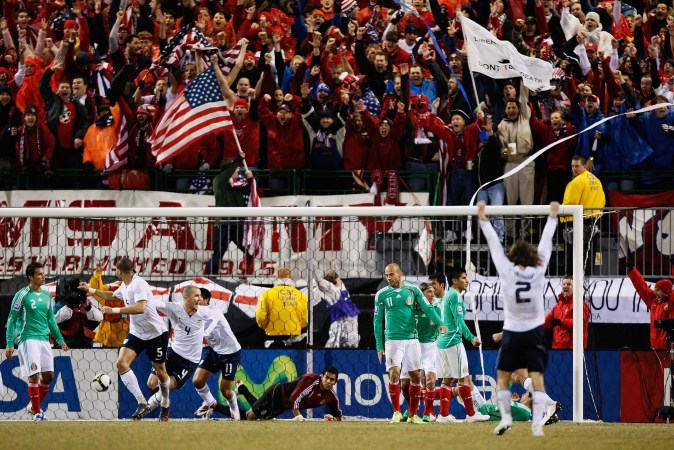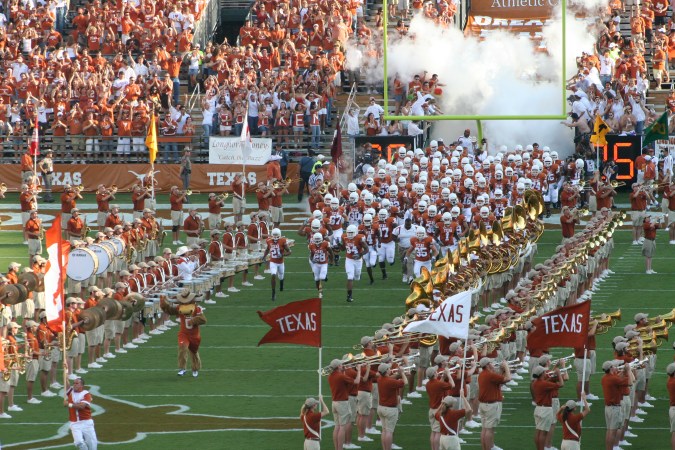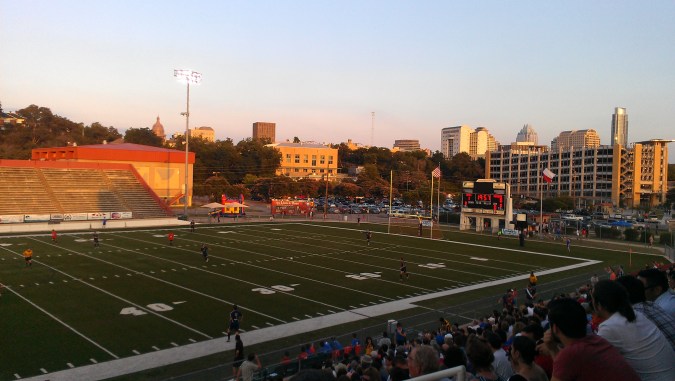Late Monday night, Grant Wahl of Sports Illustrated broke the news that one of MLS’ first franchises, the Columbus Crew, is considering a relocation to Austin, if an agreement for a downtown stadium in the Ohio capital is not put into place. Naturally, both cities received the news with mixed feelings, albeit for different reasons.
In Columbus, fans were disappointed that, after years of rumors, the move might actually happen; that the announcement comes right as the Crew are about to enter the playoffs is just another punch to the gut. Crew owner Anthony Precourt named poor attendance as one of the issues pushing the team to look for other options, and he believes one of those options is a new stadium in Columbus. Those comments had many online speculating that the threat of moving is simply a push to get a new deal for a stadium, while others believe Precourt has had his eyes on a way out for some time. The mayor of Columbus has since released a statement about the issue, saying that conversations had already fallen apart prior to this announcement. To many devastated Crew fans, the move seems imminent.
Poor ticket sales seem out of place for the Columbus Crew. They are one of the original MLS teams, and Mapfre Stadium was the first soccer-specific professional stadium in the United States. For a long time, it has even been considered the unofficial home base of the United States Men’s National Team. Whenever the team had a must-win match, Mapfre was the site chosen; it was even the site for the infamous “Dos a Cero” matches against CONCACAF rivals Mexico.

On the other hand, there is optimism in Austin, but a lot of questions still remain. If the team is leaving Columbus due to not getting a downtown stadium, where would they build one in downtown Austin? The city’s skyline is already littered with construction cranes, and available space is incredibly limited. Austin mayor Steve Adler has expressed excitement about an MLS team, but has already said he would not use city taxes to fund a stadium. In his announcement, Precourt said that a new stadium will be privately funded, and they are looking for investors; however, the team would apparently not move without a stadium plan in place.
Without a concrete plan set for new digs, the most viable temporary stadium is the University of Texas’ Mike A. Myers Stadium. Literally in the shadow of Darrell K. Royal-Texas Memorial Stadium, the 20,000 seat stadium is most notably used for the annual Texas Relays track and field events, but it also hosts NCAA soccer games. There has been mention that UT would be open to a collaboration, although no one knows how long such an agreement would hold.

Speaking of living in the shadows, UT Football will not be replaced. Despite struggling for several years now, any other team in Austin will play second fiddle to football–at least for the foreseeable future. The optimism in relocation lies in the idea that Austin residents will take to soccer the same way fans have in like-minded cities like Portland and Seattle; those cities boast some of the highest attendance numbers in MLS. However, for the current MLS teams in Texas–FC Dallas and Houston Dynamo–ticket sales are much closer to that of Columbus than those in the Pacific Northwest. A move to Austin by no means guarantees higher attendance, especially considering Houston and Dallas are considerably larger metropolitan areas, and yet the Dynamo are on pace to finish 17th in attendance, and Dallas is bringing up the rear at 22nd.
To consider a test case, the USL Austin Aztex, which operated from 2011 to 2015, had to disband this year. After losing their home field in the Memorial Day Floods, they tried to play in high school stadiums around the city, but never got the attendance numbers they needed. After taking the 2016 season off to regroup and find a stadium, they ended up dissolving before the 2017 season. The team was an affiliate to the Columbus Crew for a few years, so maybe they know something we don’t know about the current landscape of Austin soccer.

Thrown into the uncertainty, an MLS team in Austin also raises a few questions for soccer in the city and throughout Texas. A USL expansion has been in the works and plans are set to open a field as a part of Circuit of the Americas in 2019. An MLS team could derail that plan or vice versa, considering the leverage COTA already has with the city. A soccer team in Austin could also negatively impact the possibility that San Antonio FC could eventually move up from the USL to the MLS, by adding another team in such close proximity. Even in far away El Paso, the effects of a 3rd professional soccer team could change the burgeoning plans for a new city funded stadium to host a USL team with major league aspirations.
As far as soccer fandom in the Austin goes, its a bit harder to judge. There are a few places around the city that have become default soccer bars, but even during the last World Cup, there weren’t a lot of places to watch non-USMNT games. There are soccer fan club meet ups across the city, but a few packed bars on Saturday morning doesn’t ensure enough ticket sales to support a team.
Although new jobs have brought more money and people into Austin, higher cost of living are moving people further north and south.
Although new jobs have brought more money and people into Austin, higher cost of living are moving people further north and south. Perhaps a stadium by the Domain or by Southpark Meadows would better suit families. If you’ve ever been in Austin, you know that I-35 or MoPac are not equipped to handle lots of traffic, further exasperating travel in or out of downtown for games. By all accounts, both MLS and Precourt are pushing for a downtown stadium with viable public transportation, two things that the city seems unable to provide.
With all this stacked against the move, it seems many are still excited at the proposition of a professional team. While fans in Columbus are already mourning the loss, viewing parties have popped up in Austin to watch the Crew’s final game of the regular season. It’s all very reminiscent of the fans in Seattle losing their Sonics to an outside buyer who may not have had long term plans in mind. Perhaps when outsiders start comparing Austin to Oklahoma, the blasphemy will make them less enthusiastic about getting the team.




